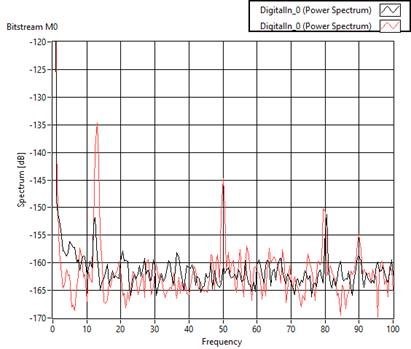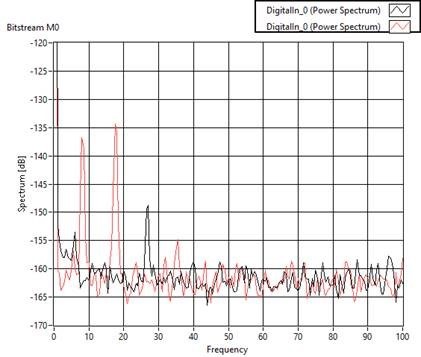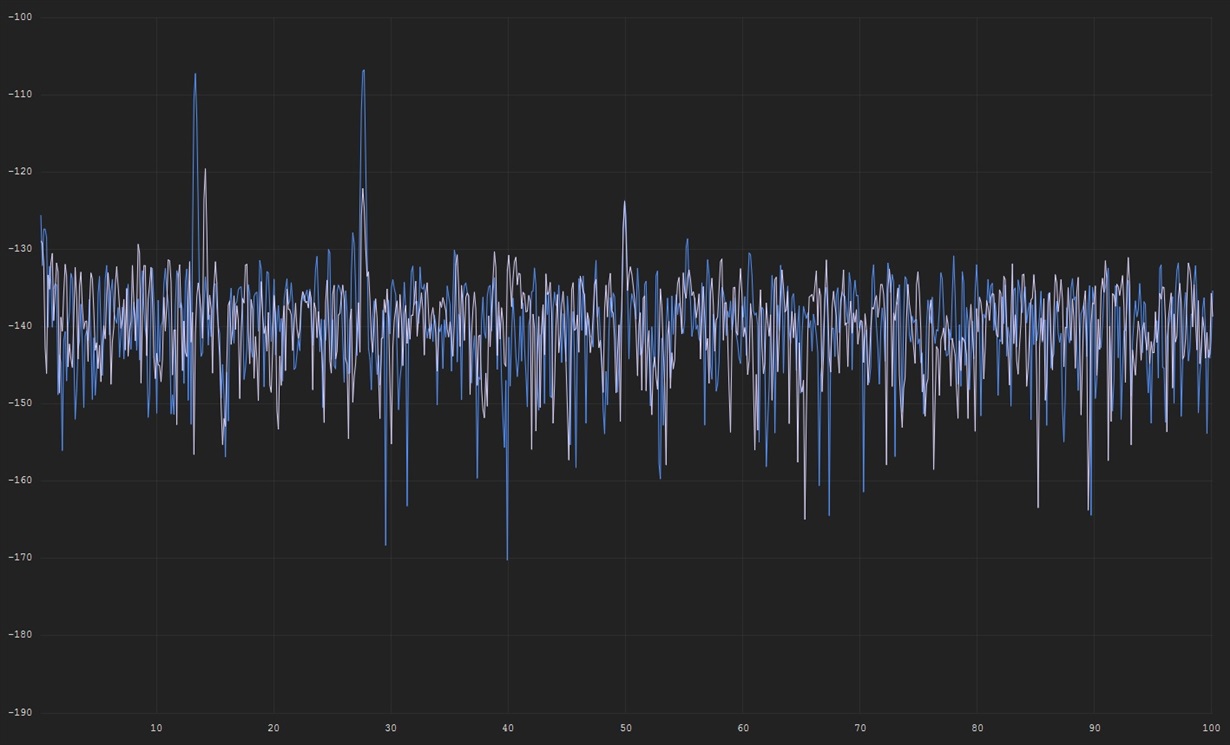We are using the ADS1281 in one of our designs at CERN to measure the current on the magnets of the accelerator. It's a low frequency, high resolution, high precision measurement and we need performance at the part per million level.
When testing some of our ADS1281 boards, we have observed very low level, low frequency periodic tones which do not exhibit the linear frequency-voltage characteristic of Sigma-Delta idle tones. The frequencies of the tones are slightly different between different ADCs (≈1 Hz), but the amplitudes differ by up to 15 dB in the investigated units. In some they don’t pose a problem, in others it’s at the limit of what could be problematic for us. The amplitude is quite small, in the worst case we saw a tone of about 6.5 uV pkpk at a frequency around 10Hz.
These tones seem to come from the ADC and not from the signal conditioning circuit or the input signal: the analogue input of the ADC was studied carefully with a high-gain, low-noise differential amplifier. No signals resembling the tones were seen. A common coupling mechanism, e.g. through the supply lines, voltage reference, or common-mode bias voltage, can be ruled out because we have three ADS1281 channels in the same board and in different cases some of them don’t show the tones while others do, at different levels.
To evaluate the problem, which we saw after filtering, we obtained the bitstream from M0 and M1 for 1 unit to see if the problem can be seen in the bitstream. The results are below for two different ADS1281 channels.
I also show below the M0 and M1 full-bandwidth spectra for two devices – please notice the “bad” device that has the high tones also has somehow different distribution of the regular idle tones. More of them appear in the M1 stream. Also, the sidebands around the idle tones seen in the M0 stream are different. One of the hypothesis we discussed was that could be related to the dither. A colleague suggested perhaps it’s the spread of the amplitude or frequency of the internal dither generator or some kind of beating with other frequency? Or an aliased version of that.
We would be grateful if someone could help us with some hints. For the moment we are replacing the ADCs that show this tones at a non-acceptable level for us. We consider that below 1.5uV pk pk the problem is negligible for us.








